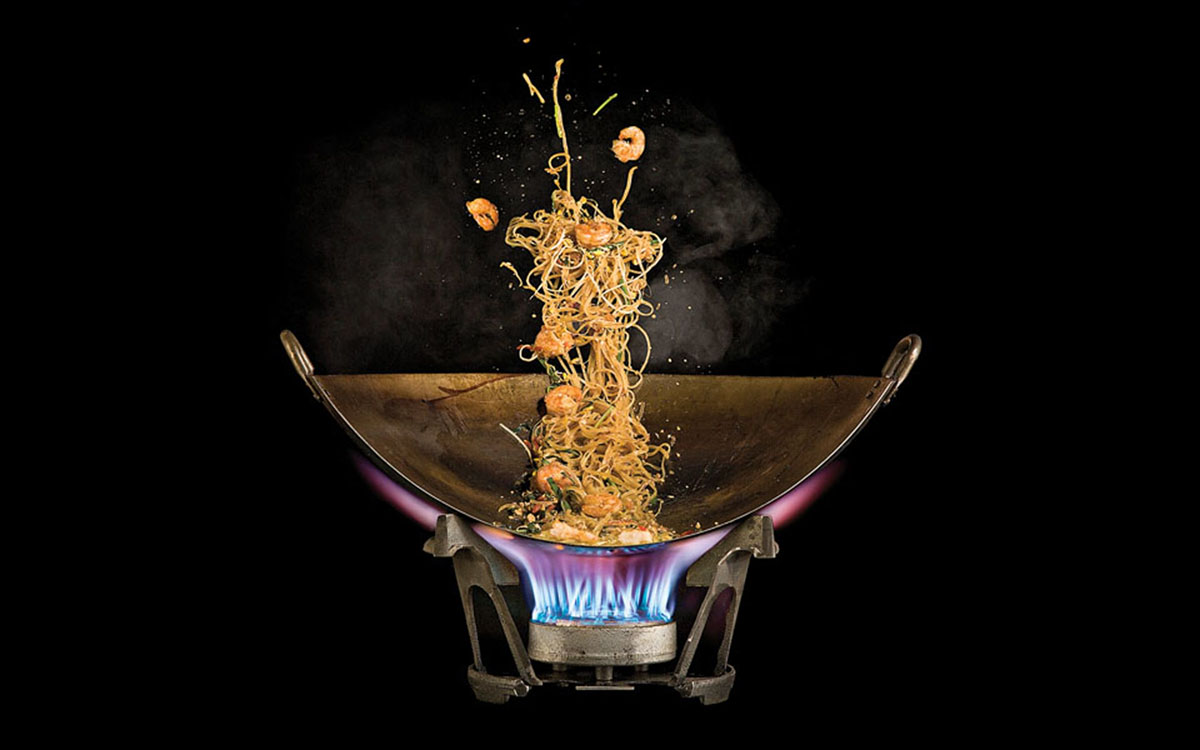cooking, now with extra science and precision

Former tech executives tend to come up with the oddest projects, especially Microsoft’s. Whether it’s funding channels devoted to computers and video games, paying for SETI’s radio telescope array, retooling schools, or vaccinating the developing world to eradicate diseases, the former chiefs and bosses of the tech titan are used to thinking big. And this could be why Nathan Myhrvold, Microsoft’s ex-CTO, bought a warehouse where he hopes to change the way we think about food. Forget boiling pasta and tasting it to see whether it’s done and poking your steak to gauge its readiness. In Myhrvold’s kitchen, food is cooked in ultrasonic baths, ultra- high pressure homogenizers, autoclaves, and other contraptions you’d expect to find in a government lab. I’m thinking that even Iron Chef producers would be blown away by the kind of advanced chemistry that goes into food preparation at that warehouse. It seems like you need a PhD just to make grilled cheese their way.
But believe it or not, you can learn how to cook like a scientist with Modernist Cuisine, the almost 2,500 page, five volume book cataloguing the lab’s techniques in exhaustive detail which will be available at a store near you and online for only $625. Hey, if you want to cook like a scientific gourmet, it’s going to cost you. And that’s not to mention the cost of whatever equipment you may need to execute French onion soup via an industrial, surgical tool sterilizing autoclave, or roast chicken in a programmable oven. Though if you have the cash and the passion, it seems that this approach to the culinary arts will appeal to the perfectionist in us all, using an exact system where nothing is “added to taste” and every cooking time is specified down to the second, then evaluated with precision thermometers to make sure it’s properly done and ready to serve. Of course, this is only for the gourmet experimenters who’d probably be ready to open a five star eatery after making their way though this five book education in culinary arts and sciences. Or even start thinking of a competitor to a show about to make it’s way to what used to be the Sci-Fi Channel, the Quantum Kitchen, geared towards aspiring chefs who always thought that being a scientist would be pretty cool too.
Hold on though, I can almost hear some people asking, where’s the natural, wholesome goodness and soul in this slowly rising merger of cold, hard science and cooking? What’s with all the emulsifiers and immersion circulators invading kitchens? And come to think of it, what’s with the timers, gages, and cooking labs? What was wrong with good, old, traditional homemade cooking? I would think that how you feel about chemistry in the kitchen in the form of Modernist Cuisine and its future iterations depends on how many warm fuzzies you assign to cooking in general. Many of us have a mindset in which kitchens and science don’t go together and place cooking into the artistic category while keeping science firmly in the analytical realm. But when you’re in the middle of making a sauce or cooking a roast, or trying to impart flavors with different seasonings, all sorts of chemical reactions are taking place, reactions that could be optimized and manipulated to get the most out of your ingredients. And if you can do that with a few high tech tools, why not? You can rebel at the notion that your food doesn’t come straight from a farm and is as pure as it can be, or you can celebrate that you can buy something at the grocery store and using science, turn it into something spectacular…





